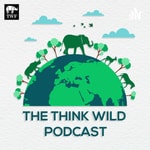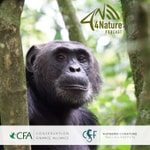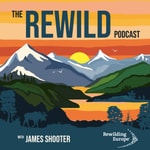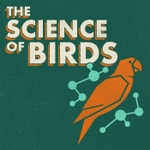The Think Wildlife Podcast – Détails, épisodes et analyse
Détails du podcast
Informations techniques et générales issues du flux RSS du podcast.

The Think Wildlife Podcast
The Think Wildlife Podcast
Fréquence : 1 épisode/14j. Total Éps: 129

anishbanerjee.substack.com
Classements récents
Dernières positions dans les classements Apple Podcasts et Spotify.
Apple Podcasts
🇬🇧 Grande Bretagne - nature
19/06/2025#94🇬🇧 Grande Bretagne - nature
18/06/2025#78🇬🇧 Grande Bretagne - nature
16/06/2025#92🇬🇧 Grande Bretagne - nature
15/06/2025#78🇬🇧 Grande Bretagne - nature
14/06/2025#68🇬🇧 Grande Bretagne - nature
13/06/2025#53🇬🇧 Grande Bretagne - nature
05/06/2025#88🇬🇧 Grande Bretagne - nature
04/06/2025#64🇩🇪 Allemagne - nature
09/05/2025#94🇩🇪 Allemagne - nature
08/05/2025#75
Spotify
Aucun classement récent disponible
Liens partagés entre épisodes et podcasts
Liens présents dans les descriptions d'épisodes et autres podcasts les utilisant également.
See all- https://amzn.to/3Ypx9Zh
22 partages
- https://amzn.to/4fhMiCL
22 partages
- https://amzn.to/3BZmtsN
22 partages
Qualité et score du flux RSS
Évaluation technique de la qualité et de la structure du flux RSS.
See allScore global : 48%
Historique des publications
Répartition mensuelle des publications d'épisodes au fil des années.
Episode 76: Restoring and Protecting the Daintree Rainforest with Branden Barber, CEO of Rainforest Rescue
vendredi 27 septembre 2024 • Durée 39:46
The Daintree Rainforest, located on the northeastern coast of Queensland, is amongst the most pristine rainforests globally. Over 10 million years older than the Amazon Rainforest, the Daintree is part of the Wet Tropics of Queensland. This forms the largest contiguous rainforest in Australia.
Countless endemic species of avifauna are found in the Daintree, such as the golden bowerbirds, tooth-billed and lovely fairywrens. Moreover, the rainforest also has a relatively stable population of southern cassowary, for which it was listed as an Important Bird Area by BirdLife International. Unfortunately, climate change, habitat fragmentation, rural development, and the spread of invasive and feral species severely threaten the Daintree.
In this episode, I speak to Branden Barber, the CEO of Rainforest Rescue on the conservation of the Daintree Rainforest. He elaborates upon the cultural importance of the Daintree, threats, and Rainforest Rescue’s conservation efforts.
Get full access to The Think Wildlife Podcast at anishbanerjee.substack.com/subscribe
Episode 75: Understanding the Way forward for the Grevy’s Zebra with Dr. David Kimiti and Damaris Lekiluai
vendredi 20 septembre 2024 • Durée 45:50
The Grevy’s Zebra is the largest extant species of equid in the world. Unfortunately, the species is listed as “Endangered” by the IUCN Red List. With less than 2,000 wild individuals found in pockets of Kenya and Ethiopia, the Grevy’s Zebra is the most threatened of the three zebra species. In the 20th Century, hunting for their skins was the primary threat to the species. However, the species is now heavily threatened by rampant habitat loss and fragmentation, driven primarily by livestock overgrazing and the spread of invasive plants. The development of linear infrastructure is further fragmenting the populations of Grevy’s Zebra.
In this episode, I speak to Dr. David Kimiti and Damaris Lekiluai from Grevy’s Zebra Trust to discuss the conservation of this rare species.
Get full access to The Think Wildlife Podcast at anishbanerjee.substack.com/subscribe
Episode 65: Safeguarding Central Africa’s Crocodiles and Pangolins with Matthew Shirley
vendredi 12 juillet 2024 • Durée 46:38
Meet the Pangolin. The world’s most trafficked mammal. Pangolins are also known as scaly anteaters due to the protective keratin scales covering their skins. Unfortunately, these protective keratin scales are leading to the pangolin’s downfall. Keratin is in high demand in China and Vietnam (the usual suspects) for traditional Chinese Medicine and as a luxury food. Moreover, pangolins are also often consumed as bushmeat and traditional medicine across Africa, though at a relatively smaller scale. It is for this reason, pangolins are the most trafficked mammal in the world, with over a million animals poached between 2004 and 2014. This is proving catastrophic, with the illegal trade of pangolins often associated with the emergence of the COVID-19 pandemic. However, there is still no global consensus regarding the origins of the deadly virus.
Currently, there are eight extant species of pangolins, with four species being found in Africa and Asia each. Out of the eight species, three are listed as “Critically Endangered” and three are classified as “Endangered” by the IUCN Red List. Meanwhile, the remaining two species are considered “Threatened. As of September 2023, there have been nine reports of extinct species of pangolin
In this episode of The Think Wildlife Podcast, I interview Matthew Shirley, the co-chair of the IUCN Pangolin Specialist Group. We talk in-depth about the conservation of the pangolin and the works of the IUCN PSG. Matthew is also one of the leading conservationists working with crocodiles, having discovered the Central African slender-snouted crocodile. During the episode, Matthew elaborates upon his extensive work on these ancient reptiles in West and Central Africa.
Get full access to The Think Wildlife Podcast at anishbanerjee.substack.com/subscribe
Episode 64: Conserving Amazon’s River Dolphins with Suzanne Smith
vendredi 5 juillet 2024 • Durée 20:04
The Amazon River Dolphin, known locally as the “Boto”, is the largest species of river dolphin in the world. The species is also the most widespread river dolphin, covering six different countries in South America. Unfortunately, the Amazon River Dolphin is classified as “Endangered” by the IUCN Red List. Commercial fishing remains the primary threat to the species. The species is also severely affected by extreme drought due to climate change and water pollution from industrial mining.
In this episode, I talk about the conservation of the Boto with Suzanne Smith, who is the founder of the Amazon River Dolphin Foundation.
Get full access to The Think Wildlife Podcast at anishbanerjee.substack.com/subscribe
Episode 63: Protecting the World’s Cranes with Dr. Rich Beilfuss, President, International Crane Foundation
samedi 29 juin 2024 • Durée 45:52
Globally, there are 15 species of cranes spread across all continents baring South America and Antarctica. With eight species, East Asia has the highest crane diversity. A few species of crane, such as the Siberian and Demosille crane, are known to migrate thousands of kilometers to avoid the harsh winter months of Siberia.
Across their range, cranes are revered culturally. For example, Sarus cranes, the world’s tallest flying bird, is often associated with the Hindu God Lord Brahama across south and southeast Asia. Similarly, in Ladakh, the Black-necked Crane is a symbol of good luck amongst the local Buddhist population.
Unfortunately, cranes are under severe threat. Across the world, cranes are rapidly losing their grassland and wetland habitats to agriculture and industrialization. Other than the conversion of natural habitat to agriculture, altered wetland hydrology due to irrigation and increased exposure to agricultural chemicals are also pressing threats. A few species of crane, especially the critically endangered Siberian Crane, have been driven to the brink of extinction by legal hunting in central and west Asian countries, such as Pakistan.
In this episode, I interview Dr. Rich Beilfuss, who is the President of the International Crane Foundation. Founded in 1971 at Cornell University by two undergraduate ornithologists, the International Crane Foundation is working extensively on the conservation of all 15 crane species. Their work extends across Asia, Africa, and North America. In this conversation, Rich elaborates on the various conservation initiatives ICF leads.
Get full access to The Think Wildlife Podcast at anishbanerjee.substack.com/subscribe
Episode 62: Protecting South America’s Jaguars from the Illegal Wildlife Trade with Melissa Arias, Jaguar and Priority Landscape Coordinator, WWF
samedi 22 juin 2024 • Durée 23:32
After tigers and lions, the jaguar is the third largest species of wild felid and the only species of the Panthera genus (big cats) to be found in Americas. The current range of jaguars extends from southern USA, across Mexico and Central America to the Amazonian rainforest. In Central and South America, jaguars inhabit tropical rainforests, deciduous and cloud forests. In North America, however, jaguars have shown a preference for seasonally flooded wetlands and dry grasslands.
The jaguar is currently listed as “Vulnerable” by the IUCN Red List following a population decline of 20–25% in about 30 years. Moreover, the jaguar has lost more than half its range since 1999. While deforestation and habitat fragmentation continue to threaten the species, the illegal wildlife trade remains a more pressing issue. Following the Second World War, the international trade of jaguar skis blossomed, with reports of up to 15,000 jaguars being poached annually for the trade from the Brazillian Amazon alone. The international trade of jaguar skins has reportedly plummeted following the enactment of the Convention on International Trade in Endangered Species in 1973. However, poaching and the illegal trade of jaguars still occur on a local scale. Seizure reports indicate that a minimum of 857 jaguars were lost between 2012 and 2018 to the illegal wildlife trade in South America.
In this episode, I speak to Melissa Arias, who has worked extensively to understand and tackle the illegal trade of jaguars. During her PhD at the University of Oxford’s Wildlife Conservation Research Unit, Melissa, scientifically investigated the drives and prevalences of the illegal trade in jaguars in Latin America. Following her PhD, Melissa has worked with various prestigious wildlife organizations, such as the Wildlife Conservation Society, CITES, and the Convention on Migratory Species. She currently is the Coordinator of WWF’s Jaguar and Priority Landscape Project.
Get full access to The Think Wildlife Podcast at anishbanerjee.substack.com/subscribe
Episode 61: Creating Landscapes of Lions with Alayne Oriol Cotterill, CEO at Lion Landscapes
samedi 15 juin 2024 • Durée 40:10
Listed as “Vulnerable” by the IUCN Red List, The African Lion is one of the most threatened species in the world. The population of this regal carnivore has dropped drastically from over 200,000 individuals a century ago to approximately 24,000 today. Almost half of this population is found outside protected areas, often in human-dominated landscapes. Rampant habitat loss and fragmentation, coupled with a sharp decline in prey abundance across their range is a recipe for human-wildlife conflict. Lions are often persecuted in retaliation to livestock degradation by these big cats. This has unfortunate consequences for Africa’s vultures which often prey on livestock carcasses poisoned by farmers, intending to murder problematic lions.
Additionally, lions are increasingly falling victim to the illegal wildlife trade to meet the demand for wildlife products in China and Vietnam, following the clamp down on tiger poaching in Asia. More specifically in southern Africa, lions are often captured for the horrific canned lion industry.
In this episode, I interview Alayne Oriol Cotterill, the CEO of Lion Landscapes, which is one of the leading organizations working towards lion conservation. We cover their various projects, such as their Ruaha Carnivore Program, Community Co-Op, and Collaring for Coexistence programs. We also talk about the “controversial” role of trophy hunting in wildlife conservation in Africa.
If you enjoyed this podcast, do not forget to share and subscribe! You can also listen to The Think Wildlife Podcast on other platforms, such as YouTube, Spotify, and iTunes.
Get full access to The Think Wildlife Podcast at anishbanerjee.substack.com/subscribe
Episode 60: Conserving the Lesser Florican and Great Indian Bustard with Sujit Narwade, Assistant Director, Bombay Natural History Society
samedi 8 juin 2024 • Durée 13:53
Once upon a time, the Great Indian Bustard was close to becoming India’s National Bird. However, the species is now considered Critically Endangered by the IUCN Red List, with less than 100 individuals remaining in the wild. The species is predominantly found in Rajasthan, though sightings do occur across the Deccan Plateau. Collisions with windmills, hunting of eggs by free-ranging dogs, and the loss of grassland habitat have decimated populations of the Great Indian Bustard. Unfortunately, the three remaining bustard species in India, have a similar storyline.
In this episode, I interview Sujit Narwade, the Assistant Director of the Bombay Natural History Society to discuss bustard conservation in India. We predominantly focus on the conservation Great Indian Bustard and the Lesser Florican, the two species which BNHS has extensively worked with.
Get full access to The Think Wildlife Podcast at anishbanerjee.substack.com/subscribe
Episode 59: The Future of Orangutan Conservation, Michelle Desilets, Executive Director, Orangutan Land Trust
samedi 1 juin 2024 • Durée 25:26
One of the most charismatic species of the rainforests of south-east Asia is the orangutan. The orangutan is the only wild species of Great Ape found in Asia, with the remaining three, gorillas, chimpanzees, and bonobos, found in Africa. Until 1996, the orangutan was considered one individual species. However, since then the species has been divided into three subspecies, which include the Borneon, Sumatran, and Tapanuli Orangutan.
Historically, the orangutan’s range spread across southeast Asia and south China. Now, the species is found in fragmented populations scattered across the Borneon and Sumatran rainforests. The species, unfortunately, is on the brink of extinction, with all three subspecies classified as Critically Endangered by the IUCN Red List. Habitat loss, driven by the rampant expansion of palm oil plantations, is the primary threat to these ecological engineers. The bushmeat trade also looms large on the species.
In this episode of The Think Wildlife Podcast, I interview Michelle Desilets, the Executive Director of the Orangutan Land Trust to discuss the future and conservation of the charismatic Great Ape.
Get full access to The Think Wildlife Podcast at anishbanerjee.substack.com/subscribe
Episode 58: Creating a Future for Clouded Leopards with Chrishen Gomez, DPhil Student, WildCRU, University of Oxford
samedi 25 mai 2024 • Durée 23:58
One of Asia’s most elusive predators is the Clouded Leopard. Until 2006, the term clouded leopard referred to one ubiquitous species found across the Eastern Himalayas, mainland Southeast Asia, and the islands of Borneo and Sumatara. However, extensive genetic analysis of various populations revealed two sister species of clouded leopard. The first is the Mainland Clouded Leopard, distributed discontinuously across the foothills of the Eastern Himalayas, South China, and South East Asia. The second species, the Sunda Clouded Leopard, is restricted to rainforests of Borneo and Sumatra. Physically, the latter has a darker and smaller cloud pattern than the former.
Studies suggest that both species diverged relatively recently (in evolutionary terms), approximately 2-0.9 million years ago. This has been attributed to the submergence of the land bridge connecting the Sumatran and Bornean rainforests to mainland Asia, hence resulting in extreme geographic isolation and hence speciation.
The population of both species has declined significantly below 10,000 individual adults. None of the subpopulations of the two species have more than 1,000 individuals. Consequently, both species have been considered “Vulnerable” by the IUCN Red List for Threatened Species. Habitat fragmentation, due to unprecedented levels of deforestation, and commercial hunting for the illegal wildlife trade are the primary threats faced by clouded leopards.
In this episode, I speak to Chrishen Gomez, a Ph.D. student at the University of Oxford’s Wildlife Conservation Research Unit. He is currently a part of WildCRU’s Clouded Leopard Programme. Established in 2010, the program has since conducted long-term ecological studies on both species of clouded leopards across their range, with the aim of improving the species conservation. Tune in to learn more about Chrishen’s and WildCRU’s research on Clouded Leopards.
Get full access to The Think Wildlife Podcast at anishbanerjee.substack.com/subscribe









